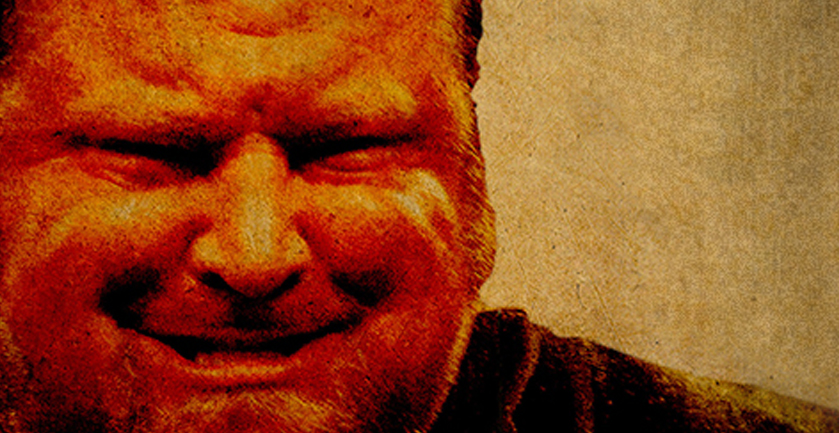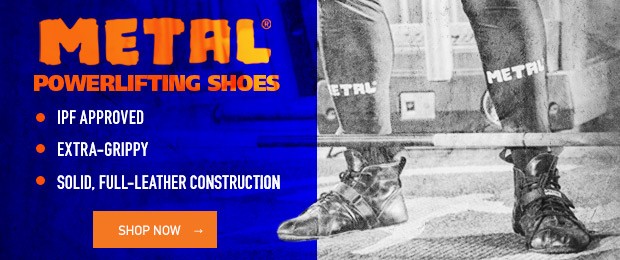
Do you root when you're lifting, especially in your squat and deadlift? If not, you are not utilizing all of the power your body has to offer. Rooting is a pretty simple concept but it has great rewards to the lifters willing to master it. Similar to bracing, I believe it comes natural to us as we develop and learn to walk. Unfortunately, we tend to mess it up once we start thinking too much and have to relearn what was naturally installed in our genetic neurology.
Rooting is a matter of getting a solid foundation between the foot and the floor. Many lifters never even really think about this important connection. When doing lifts like the squat or deadlift, we drive force against the floor to move the weights upward. The feet must be rooted correctly to transfer maximum power up through the body to the bar. Rooting also starts the activation of the correct muscles used in the lift. Just by simply rooting your feet to the floor you will find almost all the muscles of your lower body, especially your posterior chain, will automatically flex. Proper rooting of the feet triggers neurological patterns in the body to fire the correct muscle groups.
A great example of this I see time after time is the activation of the lats to supinate the hands when I am teaching rooting. If you read my last article about bracing, you know this is what I consider the last step of bracing. Everything is connected, and if we just put our bodies in the correct positions our movement patterns will become correct. This is another amazing thing about rooting. For years and years I would use many cues to correct lifters' technique, but I have learned that most of these issues can be fixed by simply reminding the lifter to root. Cues such as "sit back", "knees out", "stay tight", and others all can be fixed just by reinforcing the rooting. If the lifter is rooting properly, their knees will be in the right position and they will stay tight. So instead of them thinking about many different things, they can just think about rooting hard with their feet. One simple action cleans up their focus and makes coaching easier.
Rooting starts with the three arches of the foot. The anterior transverse arch runs across the foot where the metatarsals meet the phalanges, or the area commonly called the ball of the foot. This arch places more pressure towards the first and fifth phalanges or the inner and outer area of the ball of the foot. Then we have the medial and lateral longitudinal arches. The medial is on the inside of the foot running from the heel to the ball of the foot. The lateral is the same, only running on the outside of the foot. These arches basically create three points where pressure meets the floor. This is similar to an eagle's talons minus their middle talon (they have three toes in the front and one in the back). We will be using these three areas of contact to root to the floor.
Once in position for the lift we will have weight through the whole foot but most of the weight will still be on the heels. We will then spread our toes out as wide as we can and grip the floor with them. This gives us a bit wider base and more surface area contact with the floor. We are now going to pull the ball of the foot back toward the heel while pushing the heel out to the side, like we are now trying to grip the floor with the whole foot and not just the toes. Another way to think about this is as if you're standing on a huge ball and trying to grip your feet or talons into the ball. If this is done correctly all the muscles in your legs will activate. Everything from your quads, glutes, hamstrings, adductors, etc., will flex. Like I said earlier, most people will even flex their lats without even thinking about it. Putting the foot in the correct position and rooting it to the floor automatically engages the correct neurological patterns of the muscles.
Rooting seems pretty simple, and in theory it is. I can teach lifters to root in just a few minutes, but mastering it takes much more time. I have found most people can pick it up from a standing position very easily. They can feel the muscles activate and get tight. Nothing to it, right? Well, when they start to squat or lift, it gets a bit harder to keep good solid rooting. I know I struggled with it once I learned about proper rooting. Rooting, just like bracing, takes practice and time to develop. It takes lots and lots of work before it becomes habit, and that is what we want it to become. The more time we can spend working on it, the faster it will become natural to us, so don’t make the mistake of thinking the gym is the only place we can work on it. After I teach clients rooting, I send them away with homework. I tell them to root throughout the day as often as possible. Root when you're standing at the vanity brushing your teeth in the morning. Root when you're sitting at your desk at work. Root before you sit in a chair or on the toilet, and practice sitting down while rooting. There are thousands of chances everyday to practice your rooting, and habits are developed after thousands of repetitions.
The toes are very important to rooting, but I will admit I did not use my toes much before learning about rooting. I was very surprised to learn I did not have very good control of my toes and could hardly spread them, to the point my stubborn mind did not believe it could be done until I saw it. One of the tips I learned to help with this was to force a finger between my toes to help stretch them out. This is extremely uncomfortable, and at first you may just use the tips of your finger and gradually work the toes out. I also had to consciously work on the ability to spread my toes. Again, there are thousands of chances throughout the day to practice this. I found it very helpful to think about spreading my toes and gripping the floor when I walked. I felt as though I had neglected my poor piggies for years and had not utilized them to their potential.
RELATED: Using Your Body's Mobility and Stability Mechanisms to Drive Performance
There are some tips to make sure you are rooting correctly during your lifts too. If your toes or even the balls of your feet are lifting in the air during a lift then you are obviously not rooting to the floor. If your heel is coming up you are not rooting to the floor. Remember the eagle talon and those three points that should always be rooted to the floor. Sometimes it is not obvious that you aren't rooting well. To make sure, you can put something thin like a business card, dollar bill, thin band, etc., under the three points of contact and have someone try to pull it out during a lift. Of course do not do this during a heavy lift. If you are rooting well they should not be able to pull it out. Most lifters will be solid at the top of the movement but have issues at the bottom end of the movement, and this is a good test for that. If the lifter's knees are coming in or if they are getting loose during the lift then they are most likely relaxing or losing their rooting.
Rooting of the feet and bracing of the midsection are definitely two key foundation pieces all lifters should have. These both have very key roles with dynamic neuromuscular stabilization (DNS) and have a huge effect on how the rest of the body operates. If these two are performed correctly the rest of the body will be stronger, which means you will lift more weight. They also play a huge role in warding off injuries. Both of them are pretty simple in theory but take lots of practice to master and make habitual. I can say that both of these things played major roles in my lifting success, but at the same time I have learned more and advanced them to a new level.
I personally feel these are two of the very first things new lifters should learn and work on. For those already in the game, I think these are definitely worth taking a look at. I know many lifters that have been lifting for a long, long time but do not root or brace. I have seen lifters like this hit a lot of big PRs just by taking the time to learn this technique. Old dogs can still learn new tricks, and as humans, I think it is always good to check ourselves every now and again. Give these techniques a try and be patient. It takes some time, effort, and practice, but it will be worth it.











I am on my way to purchase an elitefts rack.
Thank you!
I am very glad you enjoyed and where able to take something away from it! I am positive you will see gains in your deadlift!
Hey Maruricio,
Sorry to take so long to reply. My rack is a 3x3 classic power rack. It has been perfect for me and holds up awesome cause we beat the hell out of it! It will last a lifetime for sure.
Thank you both,
Chad